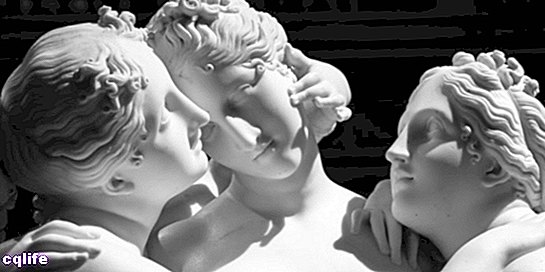We explain what beauty is for art and philosophy. Also, what is considered human beauty and what types of beauty exist.

What is beauty?
It is not easy to define beauty, beyond what the dictionary dictates: that it is the quality that we attribute to what is beautiful, to what we find aesthetically pleasing or that we consider pleasant to perceive. This applies to both objects, scenery Y sounds, as for persons, spaces and animals, but it is a concept of historical construction capable of varying immensely from one culture to another, and from one era to another.
Beauty is an abstract concept, traditionally linked to those of harmony, Balance Y proportion, whose fundamental features come from the tradition culture of each person, which is why it is often said that “beauty is in the eye of the beholder”. In fact, appreciating the beautiful is considered, even today, a form of pleasure for those who observe, and not so much for those who have such beauty.
Tradition regards beauty as the ultimate goal of art: the artists try to find it or at least capture it in some medium so that it can be appreciated by others. In that sense, beauty is understood as something appreciable in the reality, that is, something that the artist's gaze captures from the world.
However, beauty is not an exclusive matter for artists, and they have been concerned with it throughout the history the most different thinkers, who have tried to define or understand it better. In ordinary people, the ability to perceive beauty is traditionally known as "taste" or "good taste." The opposite of beauty would be ugliness.
Beauty according to philosophy
The first attempts to define beauty come from classical antiquity, specifically from the Ancient Greece. The philosophers of the time considered beauty as a matter of proportion between the parts of the thing, that is, symmetrical objects tended to be more beautiful than asymmetric ones.
However, Plato (c. 427-347 BC) considered beauty as an independent idea of beautiful things, being a manifestation of true beauty, which is found in the human soul and which is accessed only through of knowledge. In the same tradition, beauty was part of a triad of values along with the good (the goodness) and with the truth, so that what is beautiful must necessarily be good and true.
The classical concept of beauty survived until Renaissance, strongly associated with an aristocratic conception of the society (Princesses, for example, were always beautiful, while the common people or the common people were ugly and grotesque), inherited from medieval times.
However, the concept undertook a major philosophical change with the entry into the Modern age, when it began to be considered a matter of the perception, that is, a matter subjective, which can be relativized according to different cultural traditions.
Thus, for example, subjectivist philosophers such as the Englishman John Locke (1632-1704) argued that the existence of beauty is inseparable from the mind that perceives it, that is, the opposite of what the objectivists held (since they logically considered it , an objective trait).
For subjectivists, beauty was among the secondary qualities of objects, that is, it is not considered an essential feature of things, appreciable by everyone, but a feature around which disagreement can exist.
Human beauty

Human beauty is that which is attributed, since ancient times, to the Body human, both male and female. In Ancient Greece, for example, men's bodies were subject to ideal concepts (earring) that were attributed above all to the gods and tragic heroes and their sculptural representations.
In later times, beauty has tended to focus, instead, on the female body, and an entire beauty industry has been built whose purpose is to provide women with cosmetic implements to "beautify themselves", according to standards such as the ones that inspire female beauty pageants like the miss Universe.
However, human beauty is not different from other types of beauty, nor is it subject to less subjectivities and historical variations. For example, the most graceful female body by medieval European standards was that of the plump, plump woman, an emblem of health and material well-being in a time of famine and widespread misery.
While in industrial times, in which these factors do not affect culture so much, it is expected in the same geographies that the beautiful woman is slim and voluptuous. Every canon of human beauty responds, then, to a specific time and culture.
Types of beauty
There is no universal typology of beauty, just as there is no strict concept to understand it. However, informally widely dispersed and varied classifications of the beautiful are used, which give rise to types such as the following:
- Natural beauty, one that does not require accessories or cosmetic interventions, but is the result of the very hand of nature. It is used mainly to refer to feminine beauty.
- Cosmetic beauty, contrary to natural beauty, would be an "artificial" or "acquired" beauty, since it is the result of cosmetic interventions whose purpose is to adapt a body to an established beauty pattern: makeup, clothing, surgery plastic, etc.
- The external beauty, perceptible by everyone and supported by appearances, is traditionally considered a form of superficial beauty, that is, that at first glance suggests the beauty of an individual, but that can be contradicted by their way of being or the purity of your feelings.
- Inner beauty, contrary to the previous case, applies to the inner world of people, that is, to their deep beauty that is only revealed to those who take the time to get to know it. Thus, it is possible that a person who is not very beautiful on the outside is beautiful on the inside, and vice versa.
- Exotic beauty, one that comes from cultures other than one's own or that responds to foreign aesthetic canons, but recognizable. An exotic beauty can be that of a person from other latitudes, for example.
